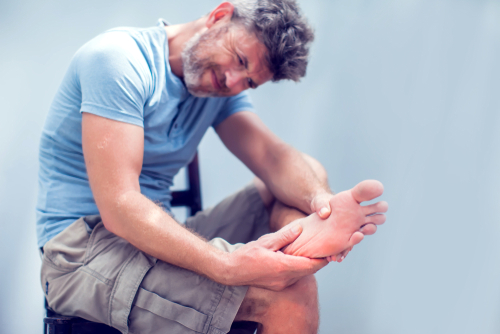Heel and arch pain can be persistent and painful. The runs and walks you once enjoyed can become a thing of the past; you may start to gain weight, and it can even impede your sleep. The start of the day can be met with extreme pain as you first step down on that heel. It generally affects people physically and mentally.

Considering the function that our feet have, it’s amazing how well they work since they are required to:
- Balance the entire body
- Adapt to irregularities in terrain
- Maintain our balance as we stand
- Take on more pressure when we gain weight
- Help our body change directions
- Function as a shock absorber
Due to these responsibilities, there are a multitude of problems that can cause heel and arch pain.
Plantar Fasciitis
Plantar fasciitis, commonly referred to as heel spur pain, tends to be worse early in the morning when you first stand up. You may find yourself hobbling to the bathroom, but after you’re going about for a few minutes, the pain may to dissipate and get better as the day progresses. This is caused by the fascia, which runs from the ball of your foot to your heel – it often tends to get overstressed therefore causing the tight band of tissue to pull or tear away from the heel. The pain affects directly under the heel where you are bearing weight. Although it is commonly referred to as plantar fasciitis, more recent studies support that it’s not inflamed but rather broken down. So, a term you may hear more of in the future is plantar fasciosis which more accurately describes the condition. It is also now understood that the heel spur you may see on X-ray does not cause the pain, but it is rather the fascia pulling from the same area on the heel bone.
Posterior Tibial Tendonitis
The posterior tibial tendon is a tendon that attaches into the arch of the foot. It’s a very important tendon for stabilizing the foot. If the foot tends to overpronate, which we call flattening, then this tendon can be overworked and this can also frequently cause pain. Particularly, as you get older, the tendon starts to wear down.
Tarsal Tunnel Syndrome
Tarsal tunnel syndrome can also occur. This may cause burning and tingling and numbness in the arch. It’s less common, but can also be causing pain in the arch.
Arch Pain
If the pain is through the arch it may be from muscle or ligamentous fatigue. This may be caused by a foot that flattens (pronates) over a very high arch which is called a cavus foot.
What causes these problems?
- Obesity
- Overuse of the arch
- Improper and run down shoes
What you can do?
- Use ice and rest the area.
- Purchase over the counter anti-inflammatories.
- Choose over the counter inserts for more support.
- Modify your activity by temporarily switching to biking rather than running.
- Reduce going barefoot as much as you can. Wearing shoes can offer more support and can reduce pain.
- Stretch your calf muscle. If your calf muscle is tight, your ankle can’t flex. It puts more pull and strain on the plantar fascia and other tissues in the arch.
- Evaluate your shoes. If they don’t support you enough, you might be due for a new pair.
When should you seek professional help?
If you’ve tried the suggested home remedies and the pain is persisting and/or getting worse, seek medical attention from a foot specialist. It should also be stressed that if you think you injured your foot (either you fell, landed wrong, heard something pop or have significant swelling) seek medical attention immediately.
What is required of you?
- A good medical history – Oftentimes your story will tell the doctor the diagnosis.
- A physical exam- a lot can be learned from the examination. This can tell the doctor whether the pain is localized or from an overstrained plantar fascia or a tight calf muscle.
- Other tests that may be done
- X-rays
- Diagnostic Ultrasound
- MRI
What are the treatments the doctor may discuss with you?
- Use of custom-made orthotics to give more precise support to the foot
- Cortisone injections
- Physical therapy
- Immobilization with a cam boot
- Stretching and possible use of night splints
- Stem cell – regenerative medicine treatment
- Laser treatments
If the conservative measures fail and significant heel and arch pain remains, the option of surgery may also be discussed. In the case of plantar fasciitis, conservative measures are usually successful, so rarely does a situation occur where surgery is necessary, but if it is, it is highly successful when performed.



